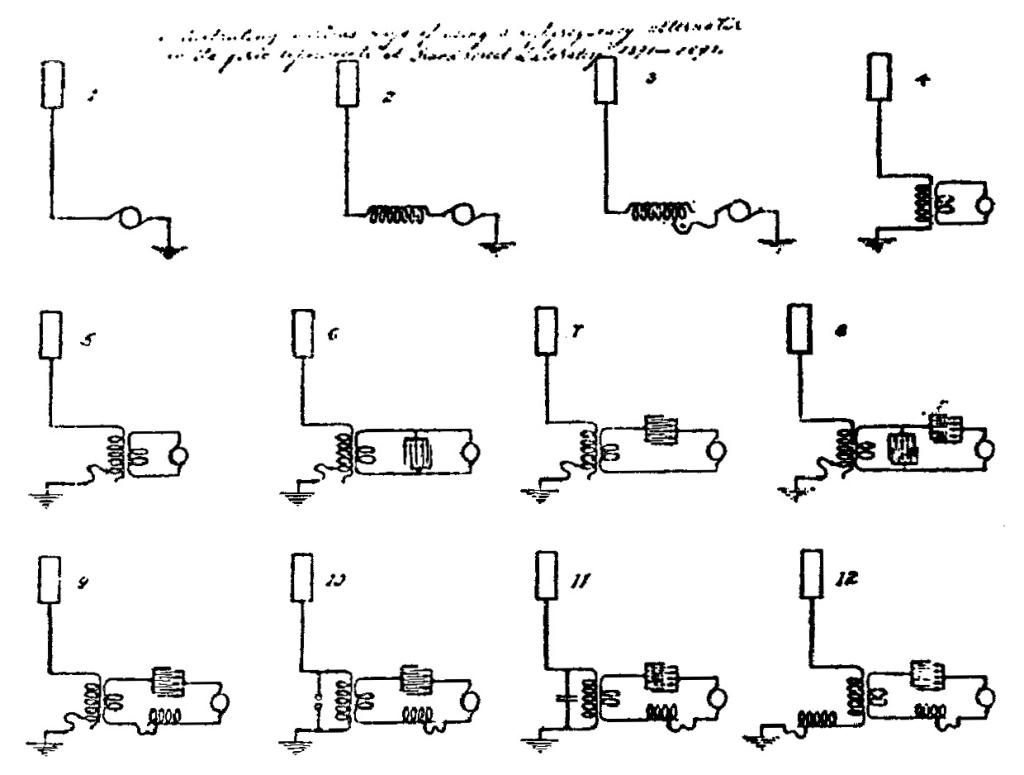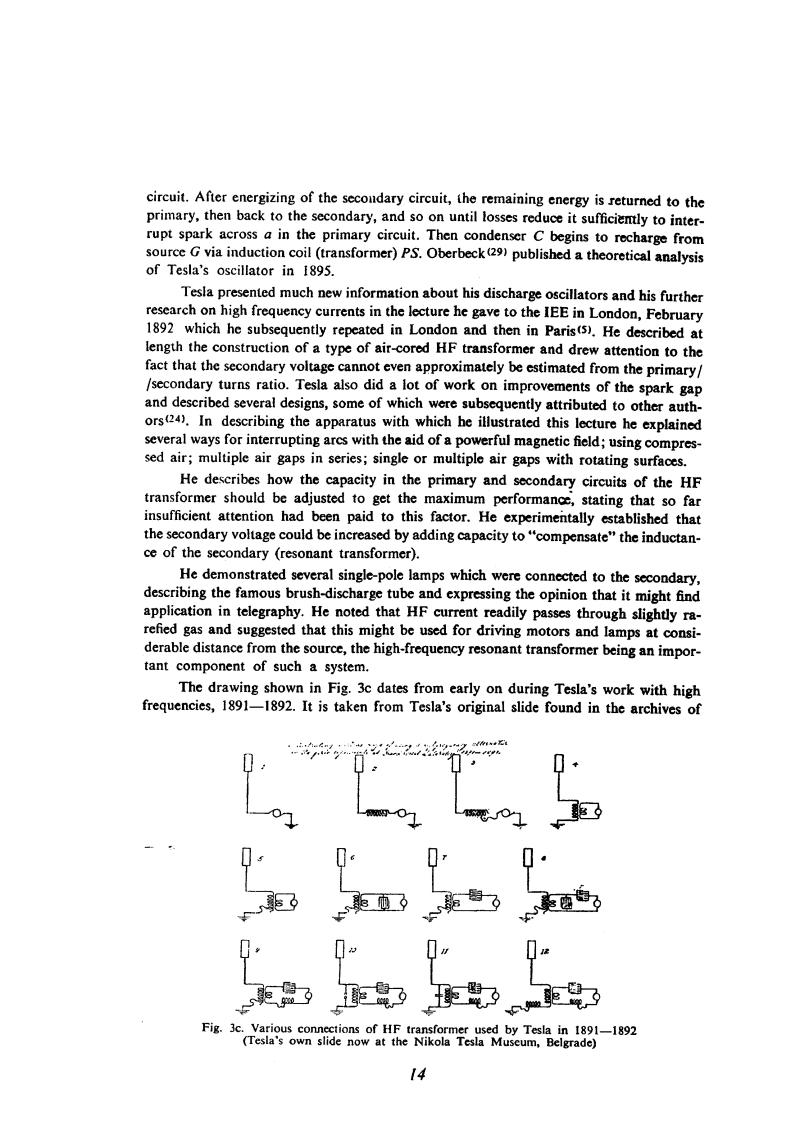
Nikola Tesla Books
circuit. After energizing of the secondary circuit, the remaining energy is returned to the primary, then back to the secondary, and so on until losses reduce it sufficiently to interrupt spark across a in the primary circuit. Then condenser C begins to recharge from source G via induction coil (transformer) PS. Oberbeck(29) published a theoretical analysis of Tesla's oscillator in 1895.
Tesla presented much new information about his discharge oscillators and his further research on high frequency currents in the lecture he gave to the IEE in London, February 1892 which he subsequently repeated in London and then in Paris(5). He described at length the construction of a type of air-cored HF transformer and drew attention to the fact that the secondary voltage cannot even approximately be estimated from the primary//secondary turns ratio. Tesla also did a lot of work on improvements of the spark gap and described several designs, some of which were subsequently attributed to other authors(24). In describing the apparatus with which he illustrated this lecture he explained several ways for interrupting arcs with the aid of a powerful magnetic field; using compressed air; multiple air gaps in series; single or multiple air gaps with rotating surfaces.
He describes how the capacity in the primary and secondary circuits of the HF transformer should be adjusted to get the maximum performance, stating that so far insufficient attention had been paid to this factor. He experimentally established that the secondary voltage could be increased by adding capacity to âcompensateâ the inductance of the secondary (resonant transformer).
He demonstrated several single-pole lamps which were connected to the secondary, describing the famous brush-discharge tube and expressing the opinion that it might find application in telegraphy. He noted that HF current readily passes through slightly rarefied gas and suggested that this might be used for driving motors and lamps at considerable distance from the source, the high-frequency resonant transformer being an important component of such a system.
The drawing shown in Fig. 3c dates from early on during Tesla's work with high frequencies, 1891 - 1892. It is taken from Tesla's original slide found in the archives of
14
Tesla: âExperiments with alternate currents of high potential and high frequencyâ, a lecture delivered before the IEE, London, Febr. 1892, L-48.
ЦвеÑава Ð.Ð. ÐÐÐÐÐРТÐСÐÐ, изд. ÐаÑка, ÐенингÑад, 1974.
Oberbeck A. âUeber den Verlauf der Elektrischen Schwingungen bei den Tesla'schen Versuchen", Wied. Ann. der Physik, 1895, vol. 55, s. 623.


